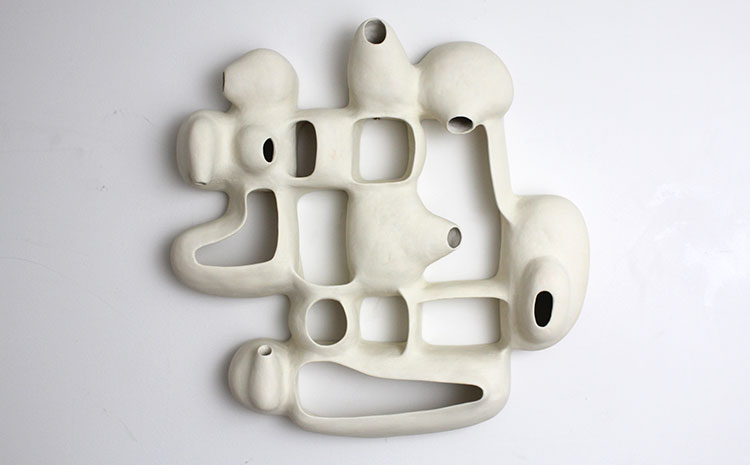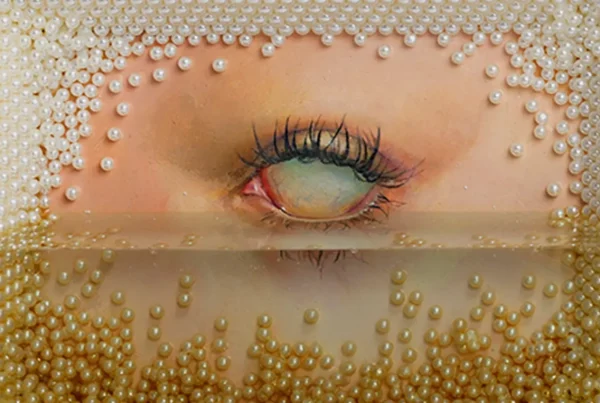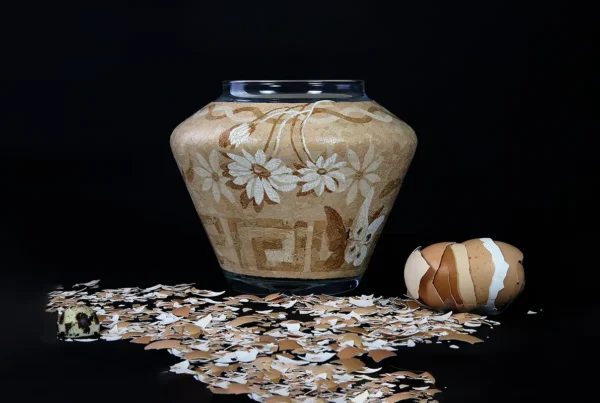“As I get older, I realize who I am now is so like who I was as a young child who spent hours making things, and school, life and all the things between now and then, brought me back to that place.”
A Convergence of Art, Science, and Literature
Joan Lurie, a ceramist with an extensive background in photography, began her exploration of the medium in the 1980s. Her fascination with airports during the mid-1980s to early 1990s led her to frequent LaGuardia Airport, intent on capturing compelling images. However, Lurie found it challenging to acquire the desired photographs.
In her pursuit of artistic inspiration, Lurie delved into literature on airports and soon discovered books on various subjects, including motels and shopping malls. She was particularly captivated by a book on sculptures found in shopping malls and a collection by Gyorgy Kepes, the Vision and Value Series, published in the mid-1960s. Kepes, a prominent figure at MIT, was among the first architects to conceptualize the cell as a model for building structures. His innovative approach aimed to unify the realms of art and science.
Lurie’s exploration of design books from the same era revealed a similar trend in which nature, biology, and plants served as inspiration for the designed environment. This discovery subsequently led her to literature on crafts, opening up a world of works from the 1960s and 1970s for her to study and draw inspiration from.

Photography, Walter Benjamin, and the Road to Ceramics
During her studies in photography, Joan Lurie delved deeply into the essays of Walter Benjamin and became captivated by the experimental photography prevalent in Europe during the 1920s and 1930s. Lurie found a particular resonance with Benjamin’s fascination for artifacts from the recent past, especially as she examined visual materials from the post-World War II era up to the 1970s. She was intrigued by the craft objects in the context of the 1980s art world, which had largely dismissed such handmade items. By the time Lurie commenced working with clay, she had amassed a plethora of references to inspire her.
In the previous year, Lurie completed a commissioned large wall piece, an exhilarating project which she hopes will lead to further site-specific commissions.
Lurie’s body of work comprises two distinct categories. She has consistently created functional pieces alongside her free-standing sculptures. Both types of work originate from wheel-thrown forms. For many of her creations, Lurie combines these forms into a unified shape before adding coils of clay to the exterior. In this way, her functional and sculptural pieces share a common foundation before diverging in their respective artistic directions.

Drawing Inspiration from Japanese Metabolists and Cellular Structures
In the early stages of Joan Lurie’s artistic journey, she drew inspiration from shapes she had observed. The Japanese Metabolists, renowned for their innovative architectural designs, played a significant role in influencing her ceramic creations. Lurie’s fascination with their abundant visual language led her to experiment with similar forms in her own work. For a considerable period, she crafted large bowls with interiors inspired by cellular structures, further showcasing her unique approach to ceramics.
Lurie’s preferred working environment is a dedicated ceramic studio. Although her current studio, located within her Brooklyn home, may not be the epitome of an ideal workspace, it provides her with a personal sanctuary equipped with essential tools such as a sink, kiln, wheel, and tables. This space allows the artist to explore her creative passions and develop her distinctive ceramic pieces.

Artistic Evolution and a Lifelong Passion for Creation
Joan Lurie’s artistic evolution has been characterized by a continuous process of revisiting and refining her earlier work, striving to address unresolved elements and improve upon her style. Lurie’s relentless pursuit of perfection pushes her to continually expand her artistic boundaries and enhance her creations.
Among Lurie’s most cherished projects is a series of sculptures she crafted during the peak of the lockdown in New York. Seven of these distinctive pieces were subsequently exhibited at Boon_Room Gallery in Paris and showcased at the Collectible Fair in Brussels in 2022.
Reflecting on her growth as an artist, Joan Lurie acknowledges a profound connection between her current self and her childhood persona, who would spend countless hours immersed in the act of creation. She recognizes that her experiences in education, life, and everything in between have ultimately led her back to that same passionate and dedicated mindset.






